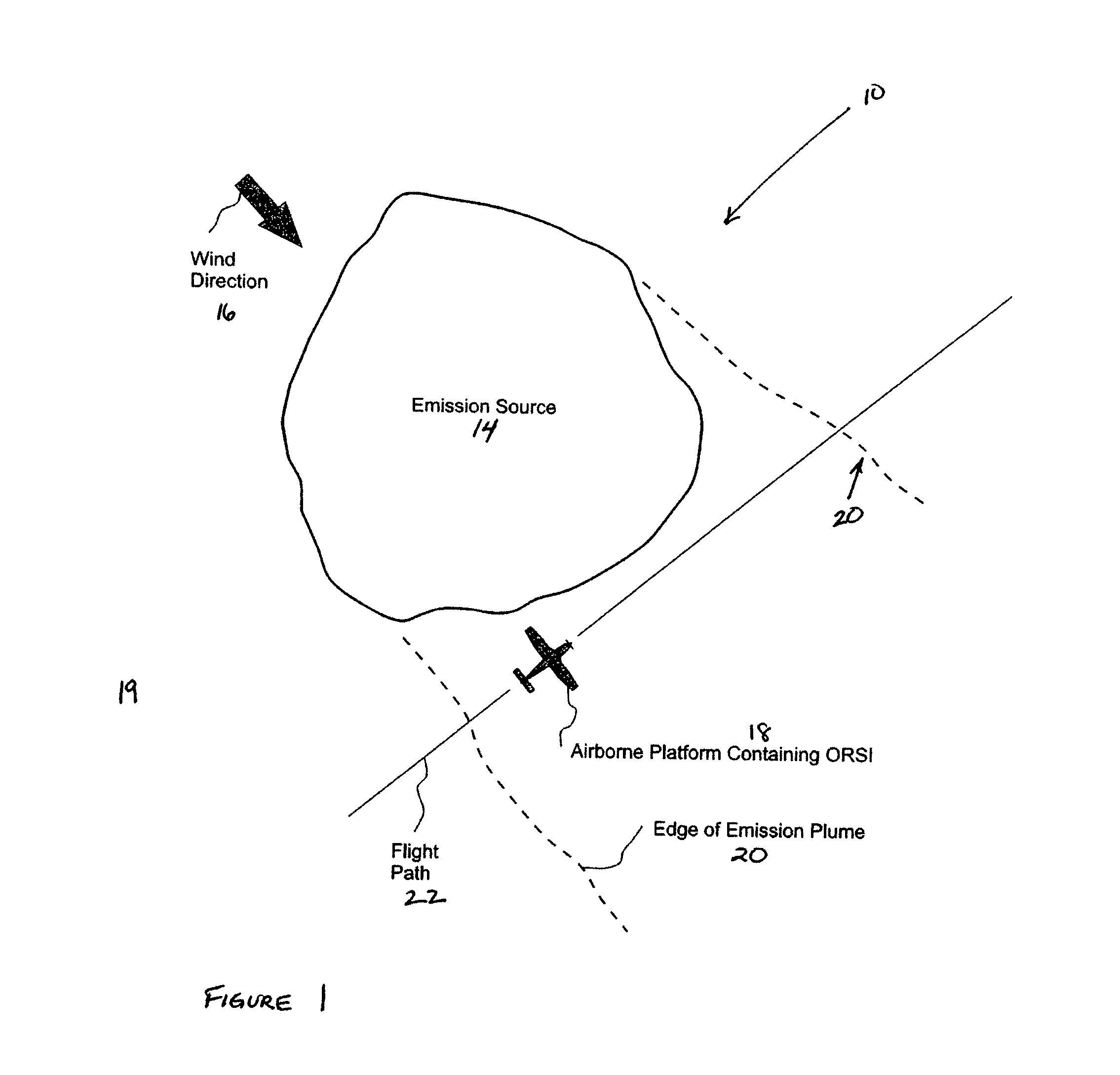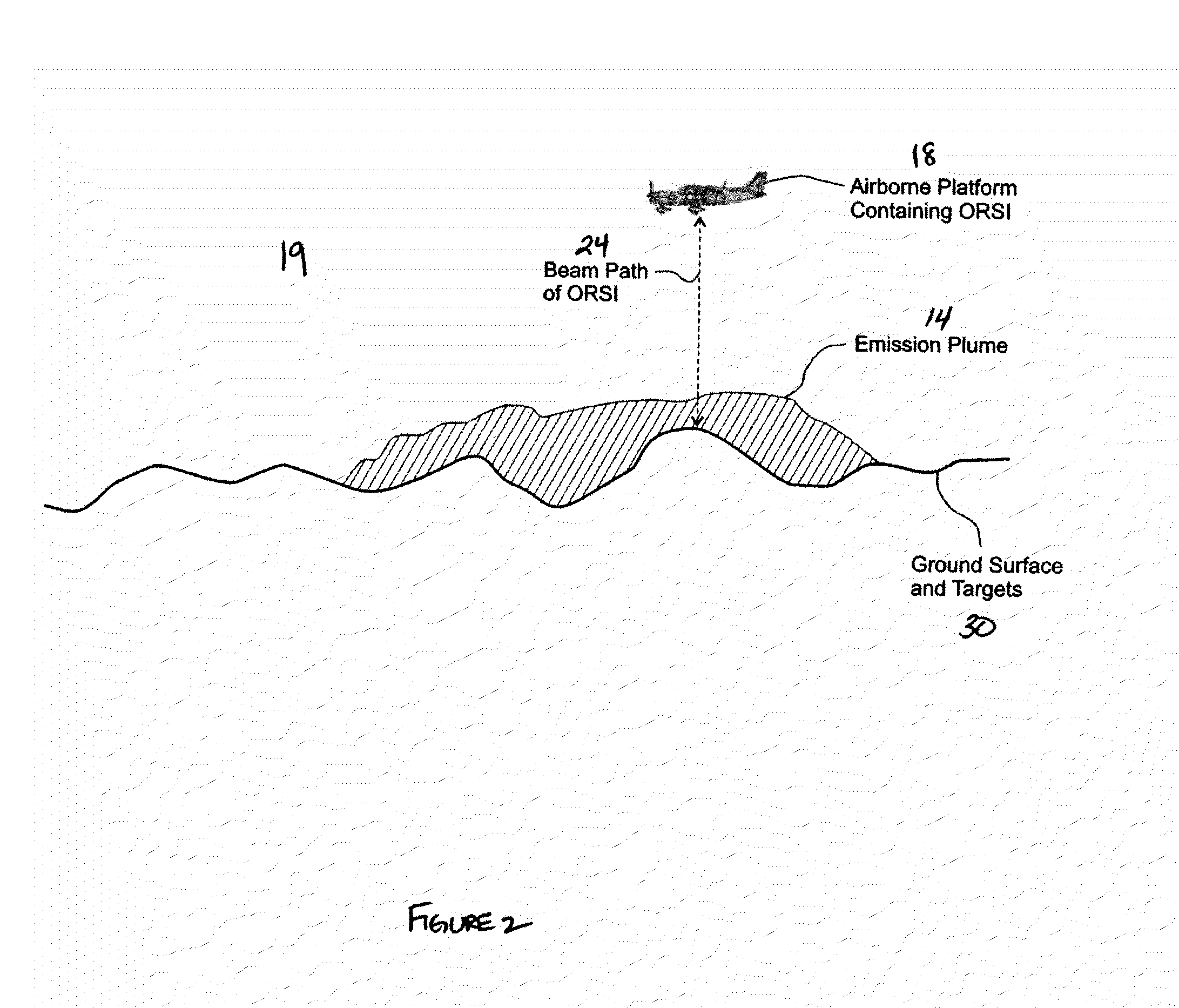Fugitive emission flux measurement
a technology of fugitive emission and flux measurement, which is applied in the direction of instruments, weather condition prediction, reradiation, etc., can solve the problems of inapplicability to sources, time-consuming use of flux boxes and dynamic closed chambers, and inability to accurately measure fugitive emissions
- Summary
- Abstract
- Description
- Claims
- Application Information
AI Technical Summary
Benefits of technology
Problems solved by technology
Method used
Image
Examples
example 1
Measuring and Determining Flux of a Fugitive Emission Plume
[0108]A controlled methane (subject gas) leak is illustrated in FIG. 3 as a fugitive emission plume of varying integrated concentrations with distance from the source, after having subtracted the background concentration. The leak has a flow rate of 17 SCFM (standard cubic feet / minute; one SCFM is equal to 1.7 m3 / hour). Three measurement planes (A, B, C) as illustrated were obtained using an airborne ORSI (DIAL using ND:YLF lasers) approximately at 300 m above the ground surface. In this special case, the ORSI was able to obtain measurements up to approximately 19 m on either side of a flight path that was parallel to the wind direction.
[0109]In this example, the wind speed is 1.3 metres per second.
[0110]The mass of methane per unit length for the three measurement planes A, B, C is provided in Table 1. The mass per unit length for each of the measurement planes is calculated by measuring the area under the ppm-m versus leng...
example 2
Adjusting an ORSI Measurement within an Emission Plume for Uniform Background Concentration
[0112]Measurement in the background region records the following data:
Distance between ORSI and target=224 m
ORSI measurement=380.8 ppm-m
Therefore, background concentration of methane=380.8 ppm-m / 224 m=1.7 ppm.
[0113]Measurement in the fugitive emission plume records the following data:
Distance between the ORSI and target=305 m
ORSI measurement=931 ppm-m
Therefore, the portion of the ORSI integrated concentration measurement due to background=1.7 ppm×305 m=518.5 ppm-m
The portion of the ORSI integrated concentration measurement due to the fugitive emission (measurement after subtracting background concentration)=931 ppm-m−518.5 ppm-m=412.5 ppm-m
PUM
 Login to View More
Login to View More Abstract
Description
Claims
Application Information
 Login to View More
Login to View More - R&D
- Intellectual Property
- Life Sciences
- Materials
- Tech Scout
- Unparalleled Data Quality
- Higher Quality Content
- 60% Fewer Hallucinations
Browse by: Latest US Patents, China's latest patents, Technical Efficacy Thesaurus, Application Domain, Technology Topic, Popular Technical Reports.
© 2025 PatSnap. All rights reserved.Legal|Privacy policy|Modern Slavery Act Transparency Statement|Sitemap|About US| Contact US: help@patsnap.com



